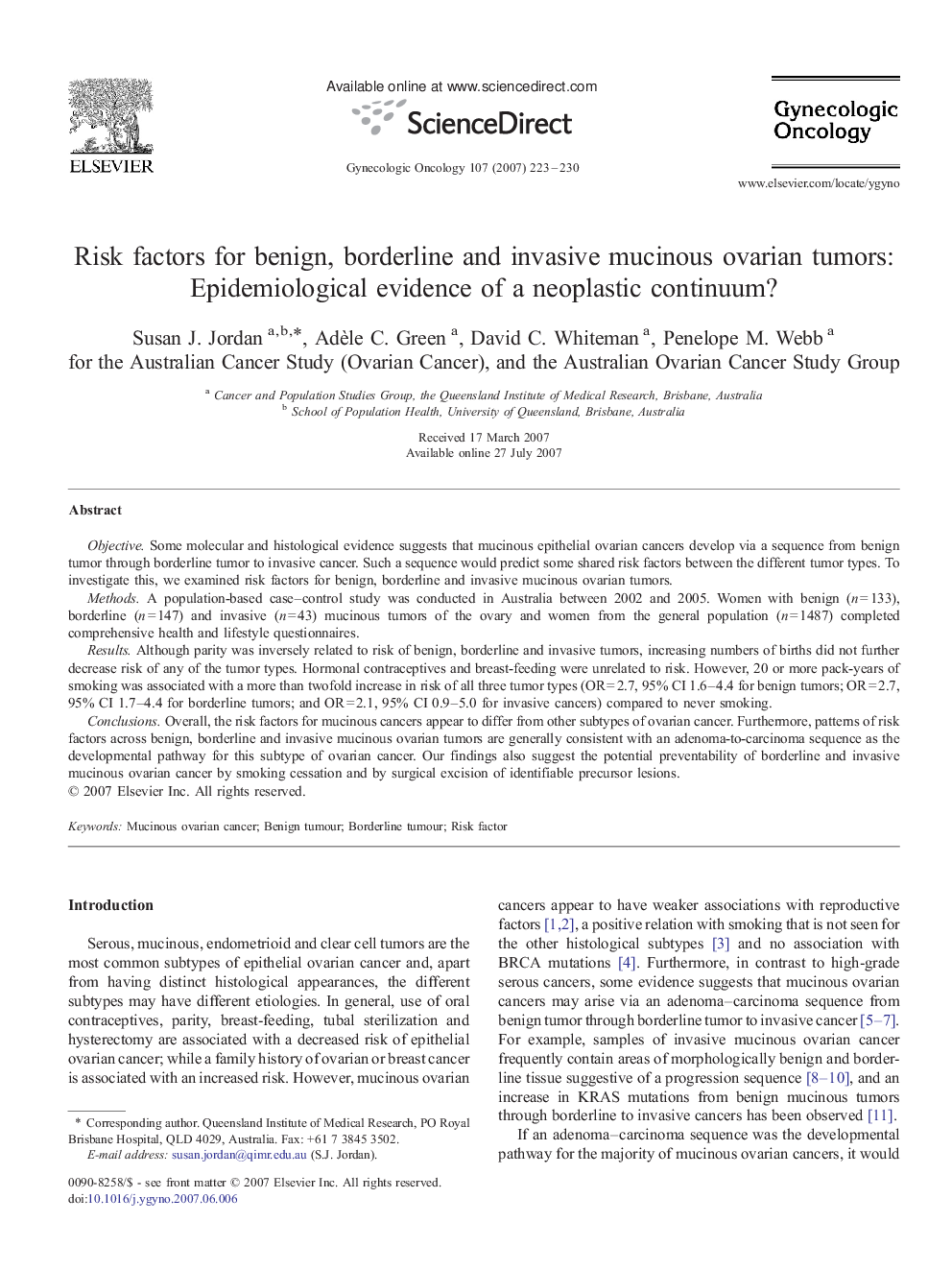| Article ID | Journal | Published Year | Pages | File Type |
|---|---|---|---|---|
| 3946179 | Gynecologic Oncology | 2007 | 8 Pages |
ObjectiveSome molecular and histological evidence suggests that mucinous epithelial ovarian cancers develop via a sequence from benign tumor through borderline tumor to invasive cancer. Such a sequence would predict some shared risk factors between the different tumor types. To investigate this, we examined risk factors for benign, borderline and invasive mucinous ovarian tumors.MethodsA population-based case–control study was conducted in Australia between 2002 and 2005. Women with benign (n = 133), borderline (n = 147) and invasive (n = 43) mucinous tumors of the ovary and women from the general population (n = 1487) completed comprehensive health and lifestyle questionnaires.ResultsAlthough parity was inversely related to risk of benign, borderline and invasive tumors, increasing numbers of births did not further decrease risk of any of the tumor types. Hormonal contraceptives and breast-feeding were unrelated to risk. However, 20 or more pack-years of smoking was associated with a more than twofold increase in risk of all three tumor types (OR = 2.7, 95% CI 1.6–4.4 for benign tumors; OR = 2.7, 95% CI 1.7–4.4 for borderline tumors; and OR = 2.1, 95% CI 0.9–5.0 for invasive cancers) compared to never smoking.ConclusionsOverall, the risk factors for mucinous cancers appear to differ from other subtypes of ovarian cancer. Furthermore, patterns of risk factors across benign, borderline and invasive mucinous ovarian tumors are generally consistent with an adenoma-to-carcinoma sequence as the developmental pathway for this subtype of ovarian cancer. Our findings also suggest the potential preventability of borderline and invasive mucinous ovarian cancer by smoking cessation and by surgical excision of identifiable precursor lesions.
